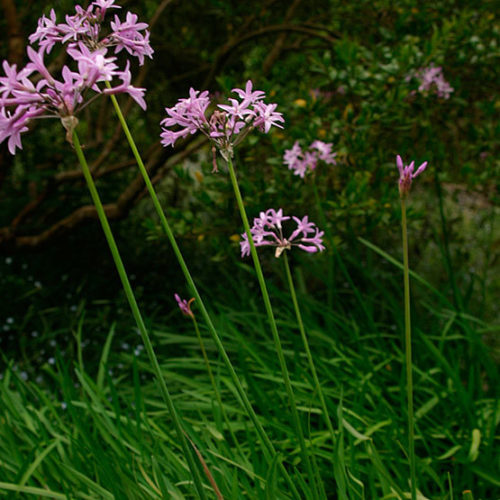Magnificent Agapanthus: Enhancing Your Garden's Charm
Magnificent Agapanthus: Enhancing Your Garden's Charm
Blog Article
Letting Loose the Secret to Successful Agapanthus Growing: Tips and Techniques for a Flourishing Garden
In the realm of gardening, cultivating agapanthus effectively needs a critical technique that includes different elements of plant treatment. By comprehending the subtleties of agapanthus farming, one can produce an atmosphere where these plants grow and flower generously.
Planting Agapanthus: Ideal Practices
When planting Agapanthus, appropriate dirt preparation is important for making certain successful development and growth of these stunning blossoms. Agapanthus, commonly referred to as Lily of the Nile or African lily, flourishes in well-draining dirt with a slightly acidic to neutral pH degree - Agapanthus. Before planting, it is essential to amend hefty clay dirts with raw material such as compost or peat moss to improve drainage and offer essential nutrients for the plants
To plant Agapanthus, select an area that gets complete sunlight to partial shade, as this will certainly advertise healthy development and abundant flowering. Dig an opening twice the diameter of the plant's root sphere and place the Agapanthus at the same deepness it was formerly expanding. Gently backfill the hole with soil, weighing down strongly to remove any air pockets around the roots.
Water the freshly grown Agapanthus completely and remain to keep the soil uniformly damp, specifically during the plant's active growing season. Agapanthus. Using a well balanced plant food once a month can even more support the plant's growth and flowering. By adhering to these ideal practices for planting Agapanthus, you can develop a magnificent display of these fascinating flowers in your garden
Suitable Soil Issues for Agapanthus
For ideal development and flowering success of Agapanthus plants, ensuring the soil conditions are ideal is crucial. Agapanthus flourishes in well-draining soil with a slightly acidic to neutral pH level ranging from 6.0 to 7.0. This kind of soil permits for sufficient water drainage, avoiding waterlogging which can result in root rot. To improve soil drainage, take into consideration including raw material such as compost or peat moss when preparing the growing website. In addition, Agapanthus favors dirt that is abundant in nutrients, so including a well balanced plant food during the expanding period can advertise healthy development and dynamic blooms.

Watering and Feeding Tips
To make certain healthy and balanced growth and dynamic blooms, appropriate watering and feeding strategies are necessary for effective Agapanthus growing. Agapanthus plants benefit from routine watering, especially throughout the expanding season.
When it concerns feeding Agapanthus, a well balanced plant click this link food with equivalent components nitrogen, phosphorus, and potassium can be applied in the springtime to advertise healthy growth and blooming. Slow-release plant foods are excellent for supplying nutrients gradually over an extensive duration. Avoid over-fertilizing, as this can bring about excessive vegetation growth at the cost of blooms.
In addition, integrating organic issue like compost right into the dirt can enhance nutrient degrees and enhance dirt framework, assisting in the overall health of the Agapanthus plants. By adhering to these watering and feeding suggestions, gardeners can ensure their Agapanthus plants prosper and produce magnificent displays of blossoms.
Pruning and Deadheading Strategies
Appropriate pruning and deadheading strategies play a critical role in keeping the health and wellness and looks of Agapanthus plants, complementing the crucial techniques of watering and feeding for successful farming. Trimming Agapanthus includes getting rid of spent flower heads, dead or yellowing leaves, and general shaping of the plant to promote far better development. Deadheading, the process of eliminating discolored blossoms, not just enhances the plant's appearance but likewise urges further growing.
When deadheading Agapanthus, it is advisable to trim off the flower stem at the base making use of sharp, tidy shears. This procedure reroutes the plant's energy from seed manufacturing back into root and foliage development, advertising a much healthier and extra robust plant. Routine deadheading can extend the flowering duration of Agapanthus and stop self-seeding, which can result use this link in overcrowding.
In regards to pruning, Agapanthus normally gain from a light trim after flowering to tidy up the plant and encourage fresh growth. Cutting down the spent blossom stems and getting rid of any type of damaged or dead vegetation aids maintain the plant's vigor and overall appearance. Nonetheless, it is vital to avoid reducing right into the crown of the plant, as this can damage its wellness.

Protecting Agapanthus From Pests and Diseases
Applying effective bug and disease monitoring techniques is important to safeguarding the health and wellness and vigor of Agapanthus plants in growing. One usual pest that influences Agapanthus is the Agapanthus borer, a caterpillar that passages into the plant, creating damage to the fallen leaves and blossoms.
In enhancement to pests, Agapanthus are vulnerable to conditions such as origin rot and fungal leaf places. By remaining attentive and dealing with insect and disease problems quickly, gardeners can help their Agapanthus grow and prosper.
:max_bytes(150000):strip_icc()/agapanthus-growing-guide-7368912_04-66a3f4cf245b4332b28954dd37c784f5.jpg)
Final Thought
In final thought, successful cultivation of agapanthus calls for correct planting strategies, excellent soil conditions, appropriate watering and feeding, normal pruning and deadheading, and defense from insects and illness. By complying with these tips and methods, garden enthusiasts visit can ensure a flourishing garden filled with beautiful agapanthus flowers. Agapanthus. Remember to preserve consistent care and attention to information to advertise the health and wellness and longevity of these sensational plants
When growing Agapanthus, proper dirt preparation is important for making sure effective development and development of these lovely blossoms.Water the freshly grown Agapanthus thoroughly and continue to keep the soil uniformly damp, specifically during the plant's energetic growing season.For ideal growth and flowering success of Agapanthus plants, making sure the soil conditions are optimal is essential. When growing or transplanting Agapanthus, guarantee the soil is well-prepared to give the needed structure for the plants to develop themselves effectively. One usual bug that impacts Agapanthus is the Agapanthus borer, a caterpillar that tunnels into the plant, triggering damage to the leaves and blossoms.
Report this page